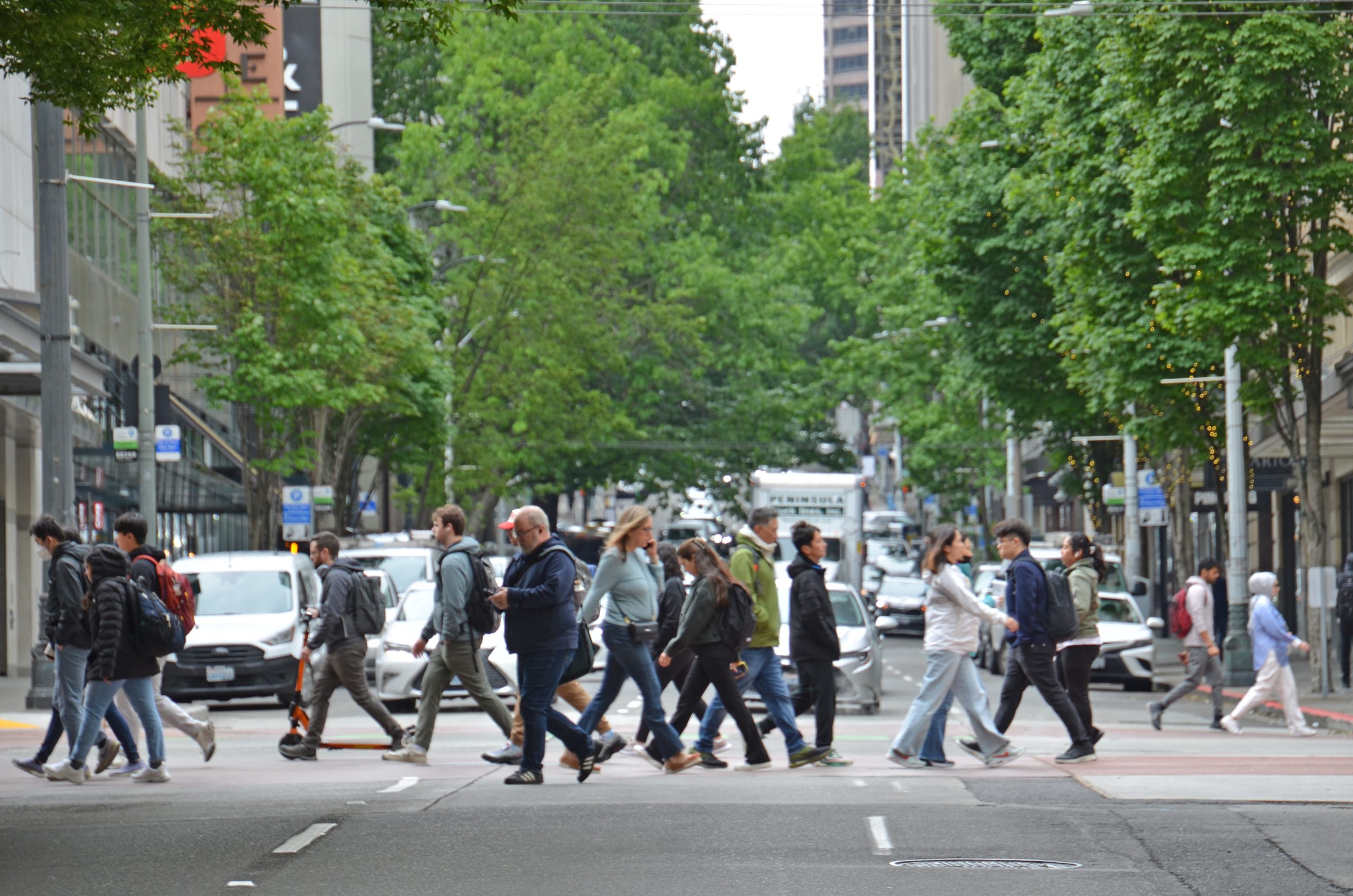News
The Seattle Times: Downtown Seattle recovery hits new return-to-office milestone
Posted on

This column was originally published by The Seattle Times on Aug. 23, 2024.
By Gene Balk / FYI Guy
Downtown Seattle’s recovery from the pandemic has been a bumpy ride, but it is showing signs of progress.
Newly released data from the Downtown Seattle Association shows that in July, worker foot traffic downtown topped 60% of pre-pandemic levels for the first time. The average daily worker foot traffic, Monday through Friday, was 90,686 last month. That represents 63% of the July 2019 daily average.
July was also the second consecutive month in which average daily worker foot traffic surpassed 90,000, which hadn’t happened since offices shuttered in the early part of 2020. In June, the average was 94,489, the highest number recorded since the pandemic. That represented 59% of the June 2019 level.
The downtown Seattle worker foot traffic data is collected for the area west of Interstate 5 from South Lake Union to the stadiums.
Seattle hit its lowest point in terms of office worker foot traffic in April 2020, when the average was at just 17% of its 2019 level for the same month.
The return-to-office data comes from Placer.ai, a national firm that provides foot traffic analytics from smartphone tracking technology.
Jon Scholes, president and CEO of the DSA, which advocates for downtown recovery, shared his thoughts on what might be driving the higher number of office workers downtown.
“The Placer software defines ‘workers’ as people coming in three days per week or more,” he said, “and it’s reasonable to think that people who previously came in one to two days per week are now coming in more frequently.” Scholes noted that office workers in other cities have been mandated back in the office at least three days per week for a while, and Seattle is starting to catch up with this trend.
Amazon, downtown’s largest employer, has required workers to be in the office three days or more per week for more than a year. Scholes said other downtown employers have started requiring workers to be in the office for four days per week.
Scholes thinks the gradual shift away from remote work makes sense from a business perspective.
“This could be the result of people gradually changing their behavior, realizing some of the benefits of in-person work and collaboration that are not really possible from their living room,” he said.
Another bright spot in the data shared by the DSA: July represented the third consecutive month in which hotel room demand actually exceeded 2019 levels. In July, the number of hotel rooms sold was at 102% of July 2019 levels. June was even better, at 105% of the same month in 2019.
The number of renters living in the greater downtown area also continues to climb, hitting a record 58,379 in the second quarter of 2024. The number of renters in greater downtown has climbed steadily since the first quarter of 2022, breaking the record each month.
The one data point that might be seen as slightly disappointing was the number of visitors to downtown in July — the nearly 3.1 million unique visitors represented 94% of the visitors seen in July 2019. The only reason that’s a little disappointing is that the figure is lower than in July 2023, when nearly 3.2 million visited downtown. But perhaps that’s not a fair comparison because last July, Taylor Swift played Lumen Field, drawing record crowds.
The numbers look good — but does downtown Seattle?
There are noticeably more visitors, and some areas are thriving, particularly on the waterfront and at Pike Place Market.
Other areas continue to struggle, including the Central Business District, where there are many vacant storefronts. But Scholes said there are some positive signs. For example, from the end of April through mid-August, street-level vacancies fell from 559 to 529 — a “small step but a step in the right direction,” he said.
Rainier Square has a couple of high-profile new openings in the works, Scholes said, and B.H. Properties’ acquisition of Pacific Place mall could breathe new life into downtown’s retail sector.